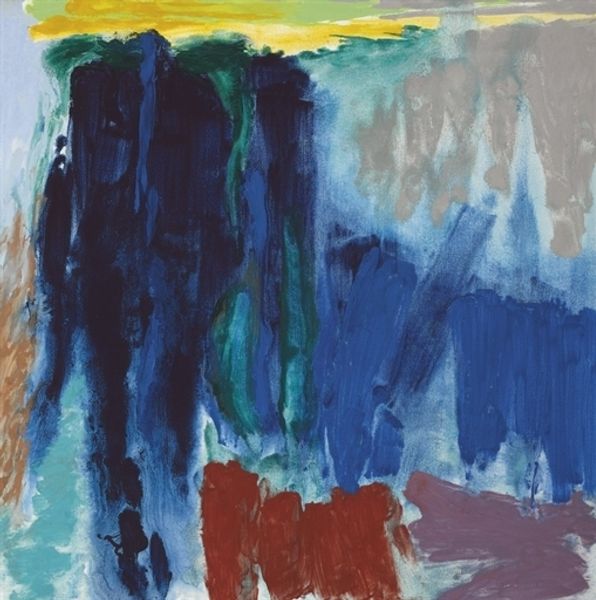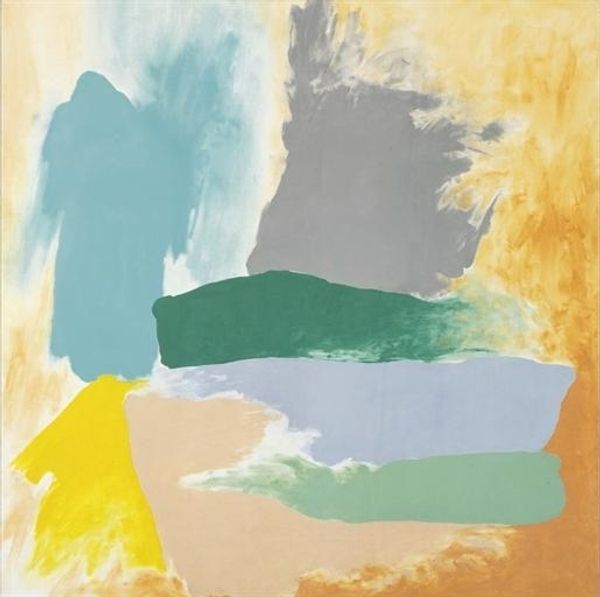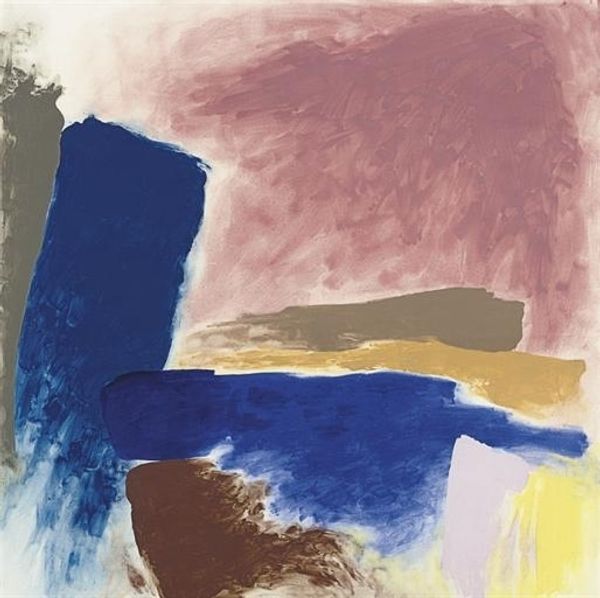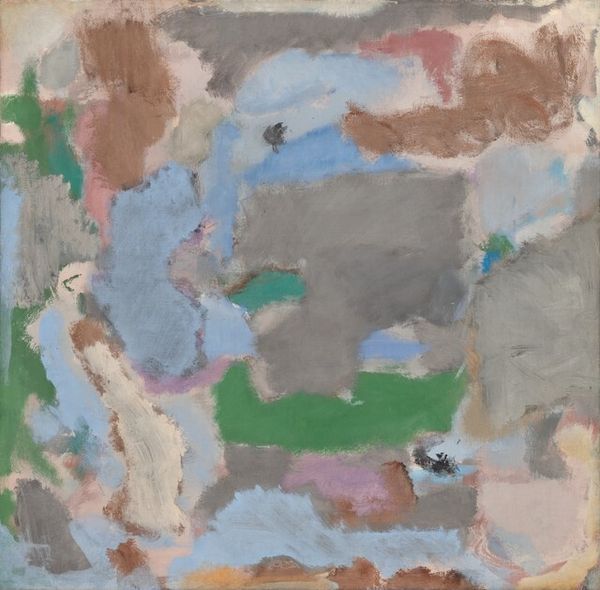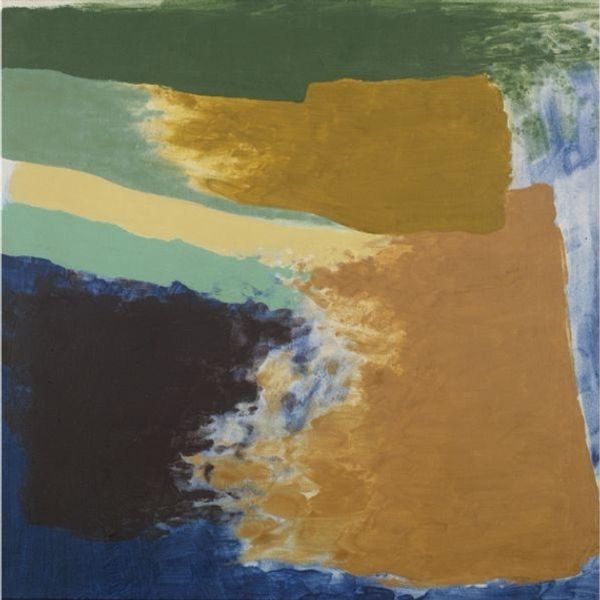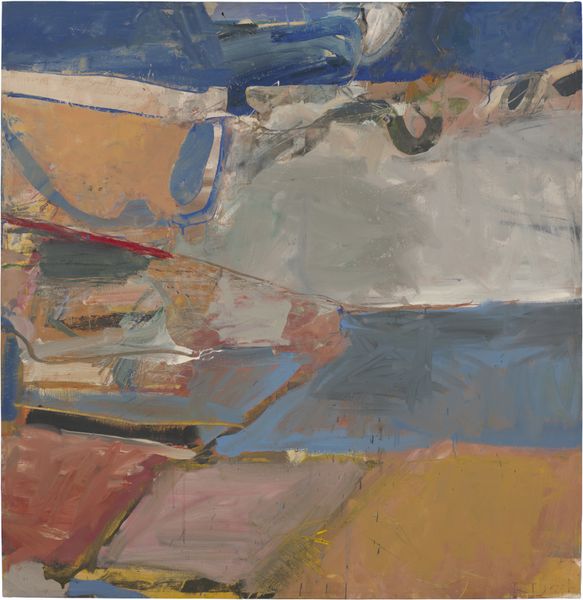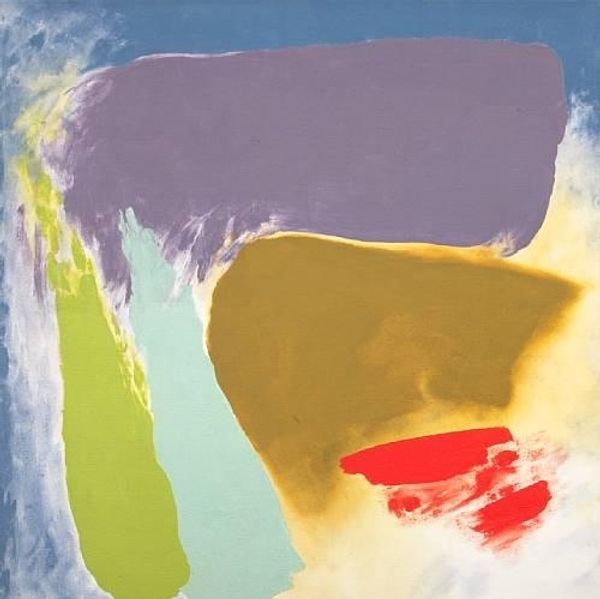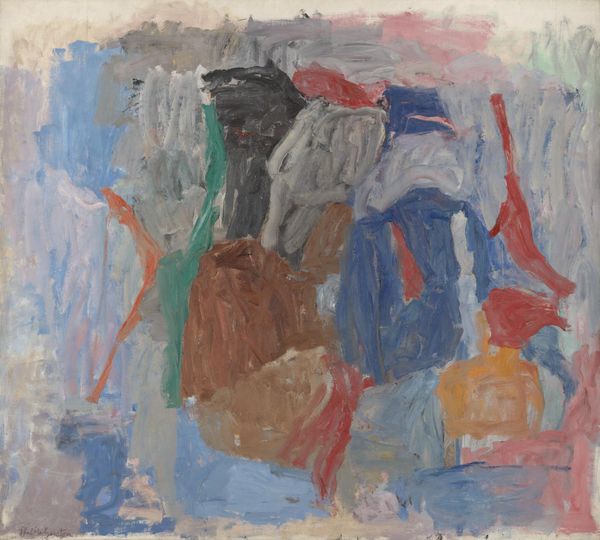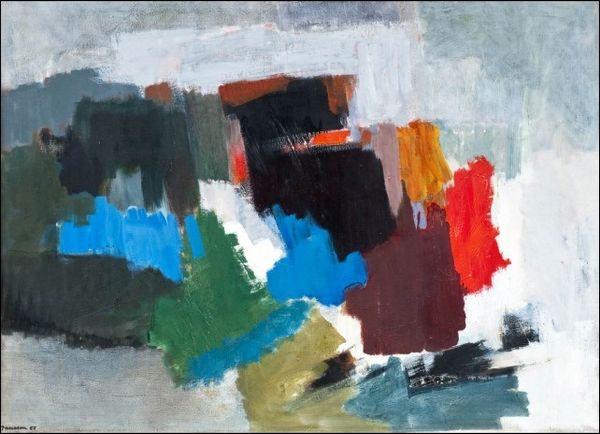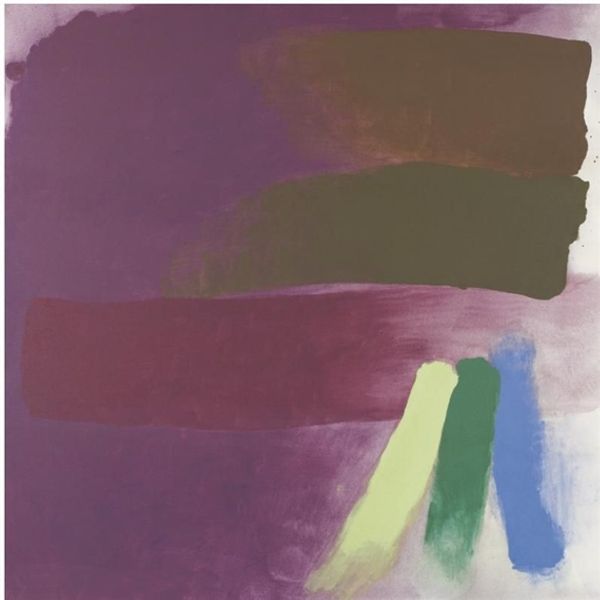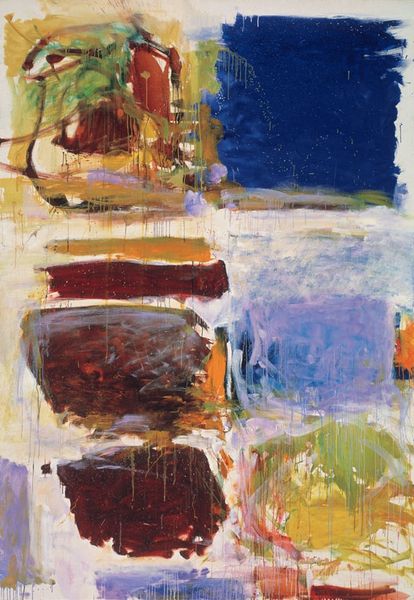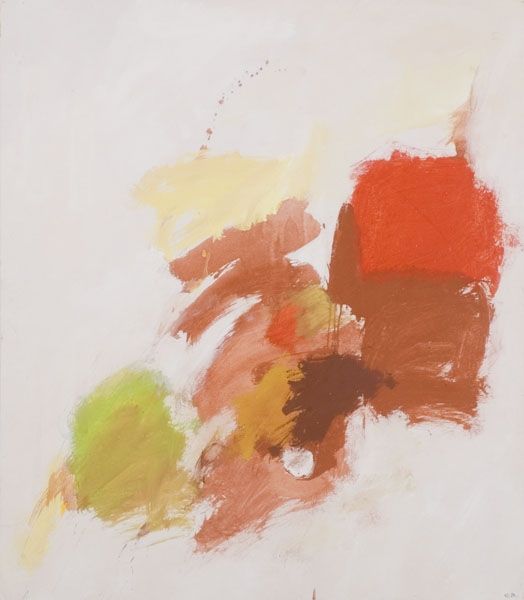
oil-paint, acrylic-paint, watercolor, impasto
#
oil-paint
#
acrylic-paint
#
oil painting
#
watercolor
#
impasto
#
acrylic on canvas
#
abstraction
#
watercolour bleed
#
post-impressionism
Copyright: Friedel Dzubas,Fair Use
Curator: Friedel Dzubas created this vibrant, untitled abstraction—or "Distant View", as it is known—with oil and acrylic paint. Look closely at how he builds up layers through impasto! What strikes you upon first seeing this? Editor: Immediately, it’s the boldness. It feels almost primal with those swathes of blues and greens, countered by patches of earthy browns. Like a landscape after an ecological disaster where hope persists through vibrant, yet almost unnatural hues. Curator: Interesting. You pick up on that immediately. Dzubas, aligned with post-impressionism, explored abstraction in ways that echoed observed realities – he transmuted them. Notice how these fields of color act as stand-ins. Blue becomes water, green vegetation, the browns, earth. Editor: But they're disrupted and disjointed. Look at the strange almost turquoise juxtaposed to an unreal green. He seems to use color symbolically, invoking ecological anxieties rather than offering simple representation of earth’s colors. What might the overlaid impasto communicate? Curator: That impasto offers a record of Dzubas’ gestures—of the decisions and actions by his own hand in layering memory upon memory. It also connects to the raw emotional expression so embraced by Abstract Expressionism. His style incorporates techniques reminiscent of watercolor; areas of colors subtly blend and run together. This softens the image despite the thick paint. The lack of definitive, recognizable forms is notable. Editor: Absolutely. And maybe those deliberate obfuscations comment on environmental accountability. When do we recognize the earth beneath our feet or see the devastation of ecological catastrophe—really *see* it—as pressing dangers? By deprioritizing easily recognizable images, perhaps Dzubas challenges us to reconstruct meaning from fragmented visual data… mirroring how future generations will inherit and rebuild a despoiled landscape. Curator: The choice of paint – oil and acrylic used together - gives certain surfaces sheen. What does that visual dynamic suggest? Editor: Perhaps the blending of material mirrors what is at risk of blurring. That sense of place, of what “landscape” and “nature” used to convey, merges as memory, symbol, and visual metaphor, ultimately creating its own statement. Curator: The symbolism of color here acts almost as coded language, revealing how our connections with ecological realities have become so culturally mediated, Editor: So Dzubas' art encourages re-evaluation as viewers come away carrying that language. Thank you, that's offered an interesting perspective into ecological art theory through the art-historical tradition!
Comments
No comments
Be the first to comment and join the conversation on the ultimate creative platform.
